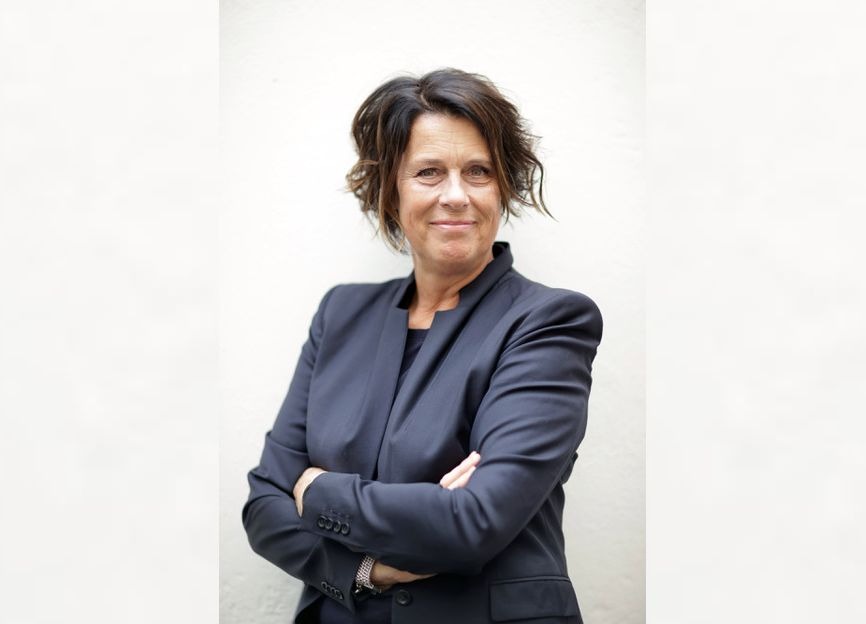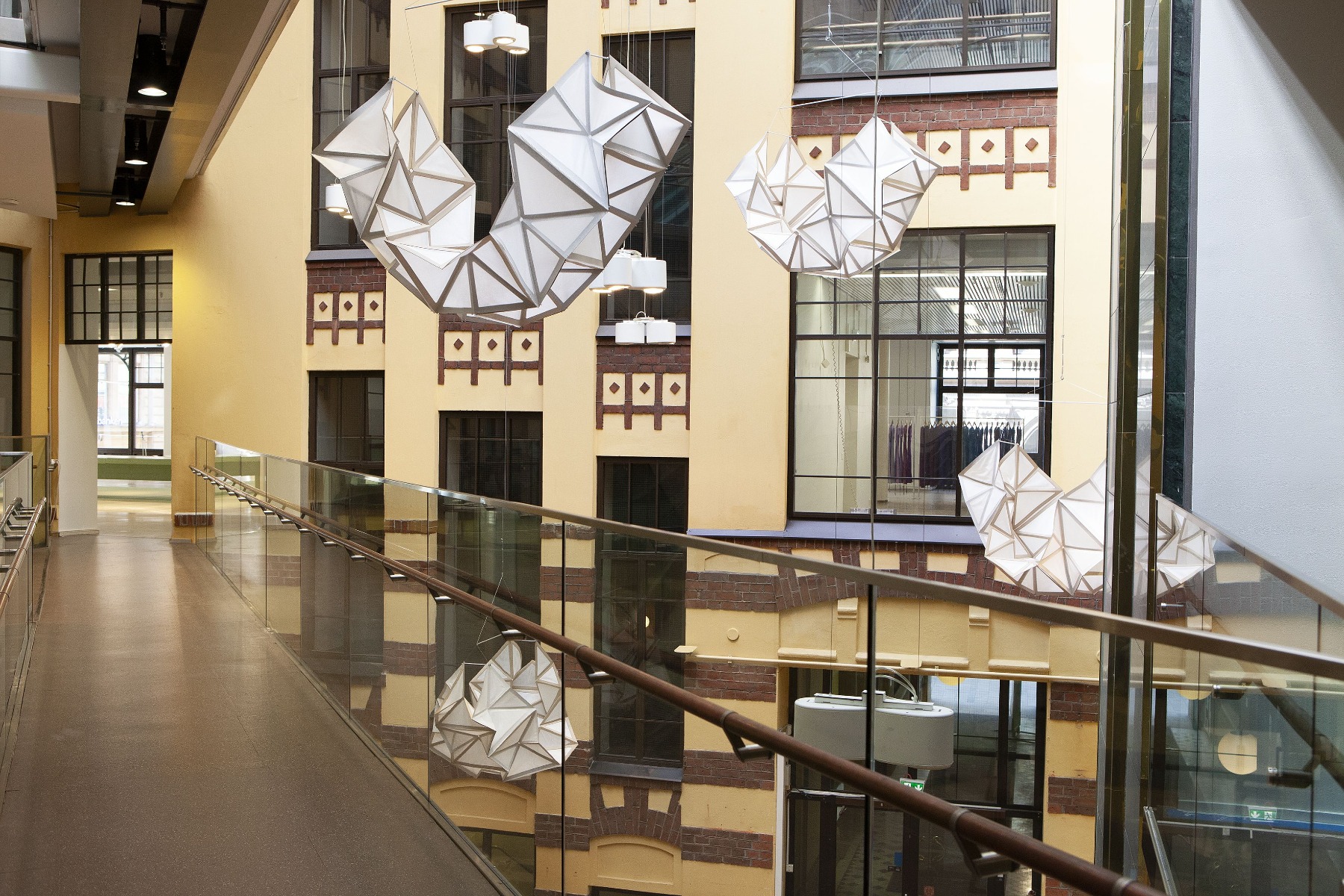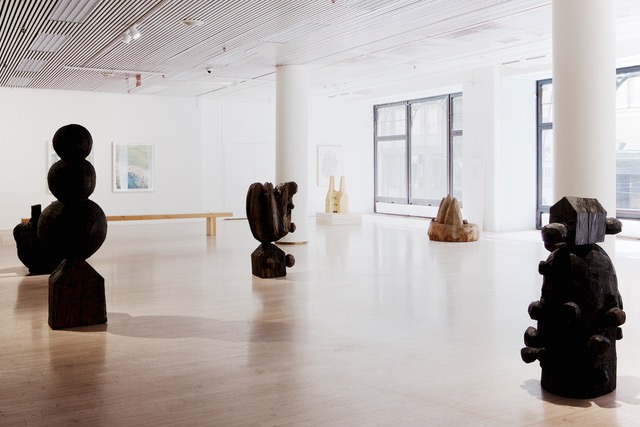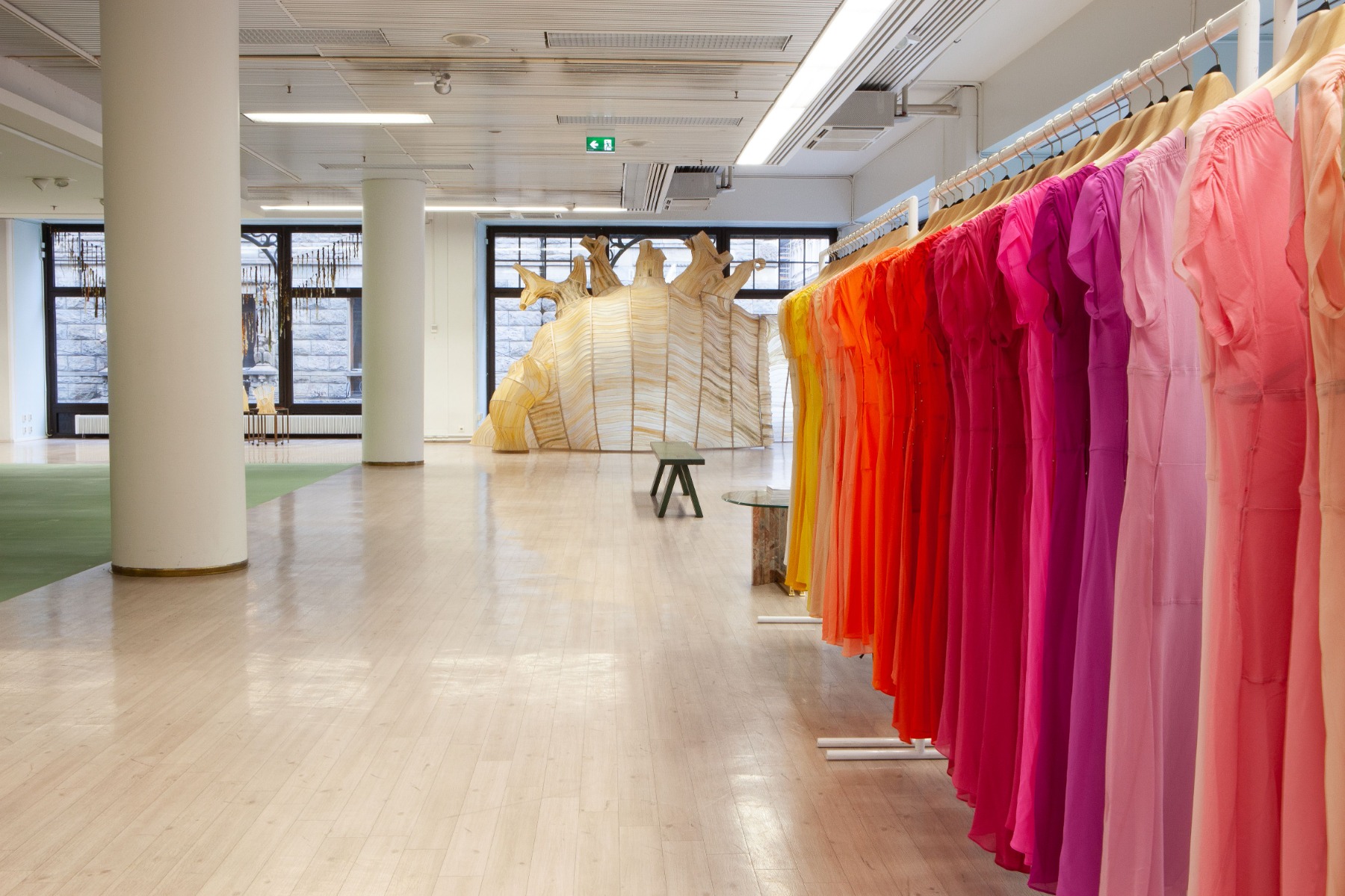
The role of micro-actors
A conversation with Scandinavian design thinker Mirkku Kullberg on Glasshouse Helsinki – a new platform supporting ethical, sustainable and responsible brand growth
The double strike of climate change paired with the global pandemic has ripped off the public’s veneer of demagoguery, leaving it naked and vulnerable. While on the macro political level the reaction to what is happening may be slow and reluctant regarding any change to the status quo, the economy is a little quicker at keeping up – especially at the micro level, where businesses, driven by survival instincts, are adapting more flexibly to change. They are regrouping, merging, and recalibrating their formats and concepts. While there still is a daunting gap between a truly green economy and the existing one, a course of change has nevertheless begun. One such example of change is a new concept store and gallery that recently opened in Helsinki. A new place of consumerism?, you may ask – yes, this may seem absurd and confusing at first, but the ‘store’ part if it is just the tip of the iceberg. This new platform is located in the 100+-year-old department store building on Aleksanterinkatu Street, undeniably an icon of Helsinki's shopping life. It was the first commercial building in the city and it still is a commercial operation today – but with a new and different energy, one that is focused on change. This is the home of the newly established Glasshouse Helsinki – a studio, incubator and consultancy whose energy is driven towards sustainability. Not fearing mistakes and the possibility of failure, the Glasshouse platform brings together different disciplines, supports innovative ideas at very early stages, provides favourable conditions for the development of new sustainable materials, and grants opportunities for young talent in the fields of fashion, design and art. Most importantly, Glasshouse acts as a matchmaker between small-scale and individual creatives and the large Finnish companies that make up the country's basic economic sector. These include Finnish industry giants such as JV Suominen (the global market leader in nonwovens for wipes, in addition to being one of the biggest nonwovens manufacturers in the world) and Vallila Interior (a Finnish company founded in 1935 and known for curtains, rugs and wallpaper).
Concept store Glasshouse Helsinki
The Glasshouse Helsinki team has made it its mission to show and prove what can be done by working together for the benefit of society and the environment. Mirkku Kullberg, founder and CEO of Glasshouse, emphasises: ‘There are more people that want to believe in the good, in the light. The future belongs to those who act. We are doing a lot of small things, but the most important thing is doing them together’.
Kullberg is a visionary leader, a cross-disciplinary thinker for business and cultural phenomenons; a design executive with a strong track record in branding and re-structuring management and turnaround processes for company profitability and brand attitude. A thought leader in Scandinavian design and modern living. An inspiring advocate and speaker for cross-lifestyle-trend forecasting in the design and fashion industries. Kullberg’s portfolio includes working with Kalevala Jewellery, one of the largest jewellery manufacturers in northern Europe, as well as Artek, which was co-founded with Alvar Aalto with the objective of advancing humane and innovative design, producing and selling furniture, lighting fixtures and interior objects, and promoting ‘the modern culture of habitation by exhibitions and other means’.
Megan McGlynn. ‘Geo-clouds’ for Glasshouse Helsinki
At a time when the meaning, goals and feasibility of the New European Bauhaus initiative are at the centre of debate, Kullberg engages in a discussion about how the new European Green Deal project – which aims to build bridges between the world of science and technology and the world of art and culture in an effort to allow design to find solutions for everyday problems – relates to Glasshouse Helsinki, which also dares to experiment and fuse together disciplines by connecting brands, concepts, creatives and thought leaders with a shared passion for innovation and sustainable business.
How does the Glasshouse Helsinki line of action relate to the objectives of the New European Bauhaus initiative?
As I am on the board of the Alvar Aalto Foundation, as well as a board member of the Paimio Sanatorium Foundation, I have been thinking about the New European Bauhaus initiative a lot. Eventually, this is exactly what society currently needs. We need to get out of these silos, and we need to have more vertical thinking in everything. We have been living a very horizontal life, especially in design. Designers haven't been taking on the role in society that they should – the role that has to do with thinking of Victor Papanek [Victor J. Papanek (1923–1998), designer, author, and activist, was one of the 20th century’s most influential pioneers of a socially and ecologically oriented approach to design – Ed.] and all related statements concerning why design exists. Design exists to solve either social or sociopolitical issues, and that is what society is in need of – and that’s why initiatives like the New European Bauhaus are extremely healthy.
In my opinion, it is a micro-level sociopolitical movement or initiative that we need. At Glasshouse Helsinki, we are precisely ‘micro-active’. The old department store in the heart of Helsinki was built in 1900 and closed down last February. At that point we received an offer to make a sustainable department store where infusions of all kinds of disciplines take place. In the current situation – when everybody thinks that retail is dead and that this kind of retail space can’t exist – it is a very bold statement. Old-school brick-and-mortar retail is in a crisis, and for a reason – it has been very conventional by thinking only about transactions. Conversely, what we are going to put at the centre is interaction. If we can get the big fiber and pulp industries and bring them together with micro-actors – I think we will be right on board with the New European Bauhaus.
Design exists to solve either social or sociopolitical issues, and that is what society is in need of – and that’s why initiatives like the New European Bauhaus are extremely healthy.
At the time when the original Bauhaus was founded, no thought was given to ecology or the various transformative processes that are now relevant. In your opinion, does the Bauhaus approach correspond to today's scale and challenges? Isn't it more of an old solution for new problems?
If it’s an old solution for new problems, that would be such a pity. However, I think if it takes on the role of bringing together people who are exceptionally talented and capable of thinking differently, then it’s going to answer the question you're asking.
Yes, at the time when Bauhaus was founded it did not have any kind of relation to ecological or environmental issues, but what people were trying to do was to merge culture and art in a very ambitious way. And we have to keep in mind that we can’t ever repeat anything that has already been done – it only has to be reinvented. For me, this title of ‘New European Bauhaus’ means that we have to rethink what kind of sociopolitical movement can be applied in the design, architecture and art scenes, and additionally, we now have another piece of the puzzle – the environment. We have been living like a madhouse for the last two decades. The design industry especially has been letting it happen. It has embodied such mental laziness for the last decade, and I have to admit – I have been part of it. I have been working since 2005 in the design industry, but what I was privileged to do was to work with Artek. For me, Artek was a medium with which to talk. My fear with the New European Bauhaus is that it can become a source of financing for something that is not really relevant to its core idea. I’m always afraid of any kind of governmental or EU funding – they really need to be cautious about what they put their money into.
My fear with the New European Bauhaus is that it can become a source of financing for something that is not really relevant to its core idea.
This crisis is the right time for collaboration and for co-creating. From your point of view, what are the biggest challenges facing collaboration as such? – At the political, economical, and perhaps even psychological/ego level?
I think we can slice this issue into pieces. One thing is related to the fact that big players – big corporate companies – are acquiring the smaller ones and then almost swallowing them. It is good that we are thinking about synergies, but eventually, we have to be careful that the core doesn’t disappear and that the beauty doesn’t disappear simply because we want to streamline things that actually should not be streamlined. Another dangerous thing is the big names or companies that have been riding on designer names. An exaggeration of names is taking place, but the content, as well as the quality, has become less interesting. I think people should step out from the culture of ‘me and mine’ and into one of ‘we and us’. We have to rewrite ‘WE’ with capital letters. Rather than talking about shareholder value, we talk about focusing on stakeholder value in the future – which means that we have here employees, people with whom we work and for whom we work. Shareholders are only a part of the bigger picture – they are neither the core nor the peak of the pyramid. They can’t be because it doesn’t work! In many ways, we have to move away from this individualistic, hedonistic way of thinking, and away from the big names. Yes, ego is a big thing!
I think people should step out from the culture of ‘me and mine’ and into one of ‘we and us’. We have to rewrite ‘WE’ with capital letters.
Another problem is related to the fact that the capital market is bringing culture and sustainability into their core just because they know that this is what they need to do. Companies think that the cultural aspect might be adding brand value, but the fact is, if it’s not genuinely integrated into their thinking, it feels fake. I think here we encounter a moral issue. It is kind of an intention of pride, and if you don’t have the right motives... Yes, here we need to rewrite the morals. For me, the biggest issue is: do we have the morals to make this world change itself?
Julia Lohmann. ‘Hidako Ohmu’ for Glasshouse Helsinki
What is going on in Finnish design right now regarding this? How ready is it to drop ‘the ego’ and make design great by working together?
The Finnish design scene has been very much relying on its legacy. And that has been instrumental for the reputation it has built, but the fact is, the design scene we have now is very different. It is not on the scale it was in the past, with the international reputation of the 30s, 40s and 50s. Many countries have been moving forward more than we have. If you think about the Netherlands, Sweden or Denmark – they are very active. But in Finland we do still understand that we have something very unique. You know, Finns are forest people, whether we like it or not – we just are. And that’s why we have a lot of industrial glass, ceramic and wood design – it all has to do with the woods. Also, in almost every village or small town you can find people working with design. Of course, urbanity is changing the culture, but at the same time, the circle economy is also offering a huge opportunity to combine this deeply rooted design with modern science.
I think we are all currently concerned with our next-generation design; we need to be humble there – it’s very fragile. And I think being fragile and vulnerable creates extremely great inspiration for future design. So, yes – I think we could be ready!
Finns are forest people, whether we like it or not – we just are. And that's why we have a lot of industrial glass, ceramic and wood design – it all has to do with the woods.
I’d like to ask about the dimension of societal involvement. In the social design approach, the designer’s role shifts from ‘design expert’ to facilitator and translator of user-experts’ needs. What are the challenges of this non-expertise in terms of society’s involvement? Are there any inherent risks?
I think there are many risks in that. We really need a new professionalism, and it all has to do with this vertical thinking. In these times we have so much information that isn't qualitative, for example, the Internet, and how it is turning into a massive unfiltered source of everything. Even futurists are predicting that a ‘sub-Internet’ with more qualitative and interesting information might evolve, and that a regrouping leading to improvement might take place. So, I think that this information will become more fragmented, and then we will be able to see much more clearly what is expertise and what is non-expertise. I think there are too many players who are not qualified at the right level. In general, these were mentally lazy times – we need to do better; the level of ambition is also super important.
Glasshouse Helsinki gallery space

This year the main venue of Helsinki Design Week will be on the premises of Glasshouse Helsinki. A section of the programme consists of the installation Office of the Future, a very topical theme on today’s sustainable design agenda.
Yes, Glasshouse Helsinki is acting as a partner for this exhibition. We are facilitating the location for them. The building has five floors, - on the ground floor the stores are located, on the first floor, there will be an exhibition created by design writer and curator Anniina Koivu. As far as I know, the exhibition Office of the Future which will cover the third floor also has something to do with technology. I’ve heard it said that the first eight weeks of the pandemic were equivalent to seven years in human behaviour when it comes to digitalization and virtual usability for meetings and conferences.
Summer exhibition (10.6.–29.8.2021) view at Glasshouse Helsinki gallery space
I recently had the chance to talk with Simon Jordan, co-founder of London’s Jump Studios, whose client portfolio includes the workspaces of Nike, Levi’s, Red Bull, Google, etc. When asked about the future of the office, his answer was ‘choice’ – to give people agency over where, when and how they work. What is your view on this topic? Do you agree that to justify its existence, the office will have to become a destination with a purpose?
Having a choice is a very good way of putting it. But I don’t think we are going back to five days a week in the office because it doesn’t make any sense – we all know that we can do our tasks (perhaps even more qualitatively) out of the office. I, at least, have been much more active and much more accurate with my things. But at the same time, psychologically we must have the opportunity to meet. I even think that meeting-life behaviour is so much more efficient when people are sharing a space, but we have to understand why – as well as what needs to be done in the office and what can be done away from it. Work will be much more divided. I don’t think it will be just the physical space that will be restructured – it will be the work itself. Working culture is going to change. There will be meetings that will require presence and office or meeting space, and there will be meetings that don’t.
I don’t think we are going back to five days a week in the office because it doesn’t make any sense – we all know that we can do our tasks (perhaps even more qualitatively) out of the office.
If the virus continues to be a presence, it is important to find design solutions that create separation without losing the benefits of collaboration.
Yes, and this is where what I mentioned before becomes important: how will work be re-planned. We are not going to spend all our time with the team anymore – we have to learn how to be alone. At the beginning of the pandemic, people thought it was fun to be at home; then they began to develop psychological symptoms – feeling alone, isolated, and locked-in. Now we are learning that maybe being a little bit isolated might be good for us. But what is the correct balance between the two? I think it is very much about balance.
Design-wise, I think it can also involve a lot more modularity, for instance, you can modulate seating for two individuals but not necessarily for the whole group of people.
Berlin-born bookstore “do you read me?!” at Glasshouse Helsinki
Designers and architects now have a critical role to play in public health. If we make buildings better for the planet, we could also make them better for people. How can the sustainability movement address public health challenges?
I think architecture has such a key role in that. It is about what kind of materials we are using, what is the life cycle of the building. That’s why I think wood as a material will be extremely beneficial – because it’s a breathing material. And it’s accessible as well as locally accessible. We all know that concrete is the biggest issue in the whole sustainability discussion. And it’s all about longevity. Buildings used to be built to last 400 years; over time, this decreased to mere decades. And lately we have been constructing so many temporary buildings. Let's build for generations! The same goes for design. In terms of the materials we use for office furniture, there is so much trash; it is really bad quality. I think that is one issue that needs to be solved. We need to think of making furniture that lasts not just five years but much longer. In addition, the whole size and scale of the average office might dramatically change because of the pandemic – businesses might prefer to rent instead of buy.
In terms of the materials we use for office furniture, there is so much trash; it is really bad quality. I think that is one issue that needs to be solved. We need to think of making furniture that lasts not just five years but much longer.
Looping back to Glasshouse Helsinki, could you highlight some unusual projects developed on this platform – ones that prove that co-creation and sustainability are truly possible?
The whole space that we have created is a kind of complex of sustainable micro-ideas. Lately I've been thinking about all of these retail environments that I have been involved in building and creating – the amount of trash they have produced is enormous. Whereas here, our main idea was to use as many recycled resources as possible. We wanted to use the recycling hubs – in the past they were dumpsters. Today they are well organized, things are sorted by materials, use, etc. Actually, there you can find all kinds of useful things – but due to Covid-19, they were closed. So, we started looking for materials like CLT wood from Timberpoint company and we made it work with huge architectural components. Also, there is a kitchen company Puustelli that uses a fire composite material for building the frames and the light table skeleton for kitchen cabinets, and we have been using those as display shelving. They look so amazing! They're so beautiful! We have been very frugal, even buying furniture and other things from liquidators, i.e. from companies that have gone bankrupt. We minimised the number of things we had to buy completely new, and when we had to buy new, we bought from Andreas Murkudis in Berlin. He sold some of his stock to us! This worked out for us because we like to think that there is no ‘last season’ – we are totally abandoning season-thinking. If things are beautiful, they are timeless!
We like to think that there is no ‘last season’ – we are totally abandoning season-thinking. If things are beautiful, they are timeless!
Another approach is to introduce artists and designers to the basic industries that provide materials for creating beautiful experiences. All this is comparable to Dover-Street-Market-thinking, where every single item that you put here – whether it’s a display or it’s an item that we are showing – is really thought through.
When I was working at Artek, we built a pavilion designed by Japanese architect Shigeru Ban. It was built out of a wood-plastic composite developed by the UPM company. Then the UPM director of development moved to another company in Finland – JV Suominen – which works in domestic fibers. So, we are using these materials in a non-conventional way, for example, experimental designer Megan McGlynn created clouds with layers of geometric structures using materials from this company.
We always keep asking ourselves: why should we do it this way if we can do it another way? If there's some other way, we will always try to find a more sustainable, responsible way of doing things.
Julia Lohmann's Japanese sea monster ‘Hidako Ohmu’ and Kostas Murkundis' dress installation
That sounds incredible!
Yes! I think that the Glasshouse team has been doing amazing work by daring to think differently. But still… We are all learning every day. It's so important to understand that imperfection will always be there. If we said we have tried to be perfect, we would be lying to ourselves. But allowing for imperfection means that we are continuously developing and implementing corrections in both our personal and company strategies.
Cultural and design programme highlights of Glasshouse Helsinki:
- l The opening summer exhibition (June 10 - August 29) at Glasshouse Helsinki gallery space presents Julia Lohmann's Japanese sea monster ‘Hidako Ohmu’, Megan McGlynn's ‘Geo-clouds’, and Kostas Murkundis' dress installation.
- l To celebrate the Helsinki Biennale, Glasshouse Helsinki is collaborating with Helsinki Art Museum HAM in presenting the video installation ‘Arkhipelagos (Navigating the Tides of Time)’ by the artist duo IC-98.
- l This year the main events of Helsinki Design Week (Helsinki, 9–19 September) will take place on the premises of Glasshouse Helsinki.